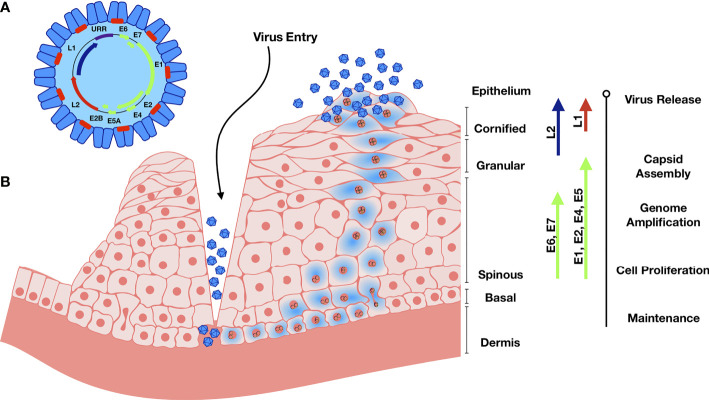Figure 1.
Genome organization and Life cycle of HPV. (A) The circular dsDNA genome is represented in the black circle. Position of early genome is represented by green, and L1 and L2 in blue and red respectively. URR – Upstream Regulatory Region. (B) Abrasion provides HPV access to basal keratinocytes. Viral DNA replication relies on the host DNA replication machinery and is supported by the early viral proteins E1 and E2. The viral genome replicates in the infected basal and stem cells and establishes HPV episome copies, which split between the daughter progeny as cells divide. The early viral proteins E6 and E7 stimulate the continued proliferation. Upon terminal cell differentiation in the upper epithelium, L1 and L2 become activated to package the high number of viral DNA copies. E4 disintegrates the cytokeratin filaments and the virus is released as keratinocyte remnants are sloughed off at the epithelial surface.

